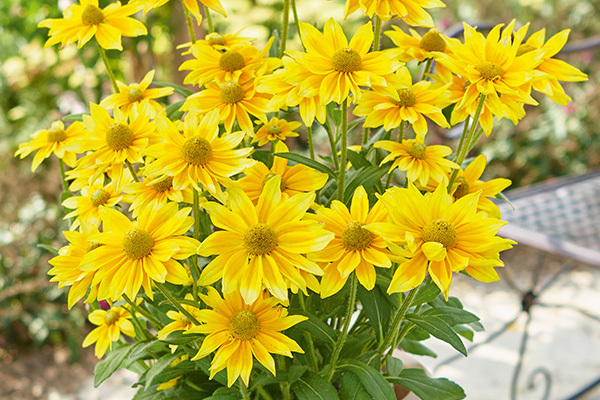
What We've Included
When to Plant | How to Plant | Where to Plant | When to Water | Deadheading | Common Issues & How to Solve Them | When will they Flower?
When to Plant
Rudbeckia (Black-eyed Susan) plants are best planted in spring or autumn when the soil is warm and moist. They need that warmth to encourage new root growth, so these seasons are best for them to thrive.
Rudbeckia seeds are best sown indoors in early spring or sown outdoors in mid-late spring.

How to Plant
Modules & Pots
Our modules and potted plants are incredibly easy to plant and grow! Whether you’re growing them directly outside into the border or in a container or keeping them indoors over winter, our modules are a breeze to care for from the moment they arrive.
- Dig a hole in the border that’s big enough to house the entire module. If planting in pots, fill a large pot halfway with potting soil and then make several holes that can hold the modules. Do this until the top of the soil from the module is just below the top of the pot.
- Fill around the modules with soil and firm them down gently.
- Water well and you’re done!
Rudbeckia Seeds
- Sow seeds indoors from February to April or directly outside from April to June.
Indoors, sow seeds thinly over trays or in containers. Keep them somewhere warm, like in a propagator, to help them germinate.
Transplant seedlings once they’re large enough to handle
Acclimatise seedlings to the outdoors for 1-2 weeks after the threat of frost has passed.
- Sow seeds indoors from February to April or directly outside from April to June.
Indoors, sow seeds thinly over trays or in containers. Keep them somewhere warm, like in a propagator, to help them germinate.
Transplant seedlings once they’re large enough to handle
Acclimatise seedlings to the outdoors for 1-2 weeks after the threat of frost has passed.
Where to Plant
Plant rudbeckias in well-drained soil and somewhere sunny. These plants are attractive to pollinators, so plant them somewhere they can be easily accessed, like in a border or container.

When to Water
Water well once planted, and often for their first year. Once they’re established, water when their soil is dry, especially when there’s long-lasting heat. If grown in containers, make sure they’re watered more regularly as their soil will drain faster.
Deadheading
If you want to see your rudbeckia duplicate, leave the seed heads in autumn. They will also feed birds. Deadheading during their growing season will help keep your display looking gorgeous and tidy. Snipping off spent flowers can encourage new growth.
Common issues & How to Solve Them
Take precautions against slugs and snails as they might take a particular interest. Sprinkle grit, broken shells or something sharp to the base of the plant to stop them from reaching the leaves and blooms.
If you find a powdery white residue on the underside of the leaves, then you may have found powdery mildew. This can happen to a plant that’s grown in less-than-ideal conditions. Cut back affected plants or leaves and dispose of them so they can’t infect any other plants. You can also add mulch to stop the remaining spores from reaching the plants come spring.

When will they Flower?
You should expect rudbeckias to flower throughout summer and into mid-autumn. Many varieties have a long flowering period, providing colour for longer. This is often from June to September, but this may depend on the variety.
Ready to Shop?
